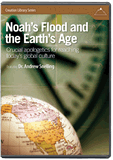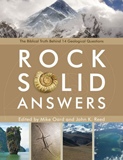
Global Evidences of the Genesis Flood
The earth is scarred with evidence of the worldwide flood in Genesis.
We are told in Genesis 7–8 that “all the fountains of the great deep” were broken up and water poured upward from inside the earth for 150 days (five months). The floodgates or windows of heaven were opened, and torrential rain fell globally for 40 days and nights. As a result, all the high hills and the mountains—the whole earth—was covered by a global ocean. All air-breathing life on land was swept away and perished. Second Peter 3:6 confirms, “The world that then existed was deluged with water and perished.”
Though the sober, matter-of-fact language of Scripture clearly describes a global water cataclysm, some people still reject the biblical account of a flood entirely, while others construe the flood of Noah’s day as merely local. But a catastrophe as swift and wide-spreading as a global flood would leave marks on the continents across the globe, even 4,500 years later—and that is exactly what we see today.
1. Marine Fossils High on Mountains
Fossils are one of the best evidences of a global flood, especially where many fossils are found. For example, we don’t find marine creatures, such as fish, clams, and corals, buried and fossilized on the sea floor where they once lived. Instead, we find most of them buried in sedimentary rocks on the continents, even on high mountains. For that to happen, the ocean waters had to totally flood the continents. And that’s exactly what the Bible describes during the global flood.
We find ammonite fossils (squids with coiled shells) in limestone layers, high up in the Himalayas in Nepal, near the top of Mount Everest. Of course, Mount Everest wasn’t there before the flood, so the ocean waters didn’t have to rise to over 29,000 feet (8,840 m) above current sea level to cover it. Instead, the sedimentary layers now making up the Himalayas were first deposited on the continent during the flood. The layers buckled and uplifted at the end of the flood to form the towering Himalayan mountains we see today.
Similarly, we find marine fossils in most rock layers exposed in the Grand Canyon’s walls in Arizona. At over 2,950 feet (900 m) above sea level, the Redwall Limestone is one of the best examples of these rock layers. It commonly contains fossil brachiopods (clam-like organisms), corals, bryozoans (lace corals), crinoids (sea lilies), bivalves (clams), gastropods (marine snails), trilobites (horseshoe crab-like animals), cephalopods (squid-like creatures), and even fish teeth.
These marine fossils are found haphazardly preserved in this limestone bed. For example, though live crinoids have columnals (disks) stacked on top of one another to make up their stems, in the limestone these disks are mostly separated from one another. These marine creatures were catastrophically destroyed and buried in this lime sediment now high on the continent.
2. Massive Fossil Graveyards Around the World
Countless billions of plant and animal fossils are found buried in extensive graveyards around the world. For example, billions of straight-shelled, chambered nautiloids of all different sizes are found fossilized with other marine creatures (crinoids, corals, brachiopods, gastropods, and bryozoans) in a 7 foot- (2 m-) thick layer within the Redwall Limestone of Grand Canyon. This fossil graveyard stretches for 180 miles (290 km) across northern Arizona and into southern Nevada, covering an area of at least 10,500 square miles (30,000 km2).
To form such a vast fossil graveyard required 24 cubic miles (100 km3) of lime sand and silt, flowing in a thick, soup-like slurry at more than 16 feet (5 m) per second (more than 11 mph [18 km/h]) to catastrophically overwhelm and bury this huge, living population of nautiloids.
How could this have happened unless the ocean waters rose and rapidly swept over the continents in the global, catastrophic flood?
In another fossil graveyard in Montceau-les-Mines, France, hundreds of thousands of marine creatures were buried with amphibians, spiders, scorpions, millipedes, insects, and reptiles.
These marine and land-dwelling creatures are found buried together on the continent. How could this have happened unless the ocean waters rose and rapidly swept over the continents in the global, catastrophic flood?
3. Exquisitely Preserved Fossils
During the flood, many creatures were buried and fossilized so quickly that they were exquisitely preserved. Because many fish were buried alive, the fine details of their fins and eye sockets have been preserved. Even the compound lenses in many trilobite eyes are still available for detailed study.
Delicate species were also well preserved. Mawsonites spriggi is a fossilized jellyfish that was found in a sandstone bed covering more than 400 square miles (1,040 km2) of the South Australian outback. Thousands of these jellyfish are impeccably preserved in this sandstone bed. This is significant because soft-bodied creatures like jellyfish that wash onto a beach today melt in the sun or are destroyed by crashing waves. Based on this knowledge, the discoverer concluded that all of these fossilized, soft-bodied marine creatures were buried in less than a day.
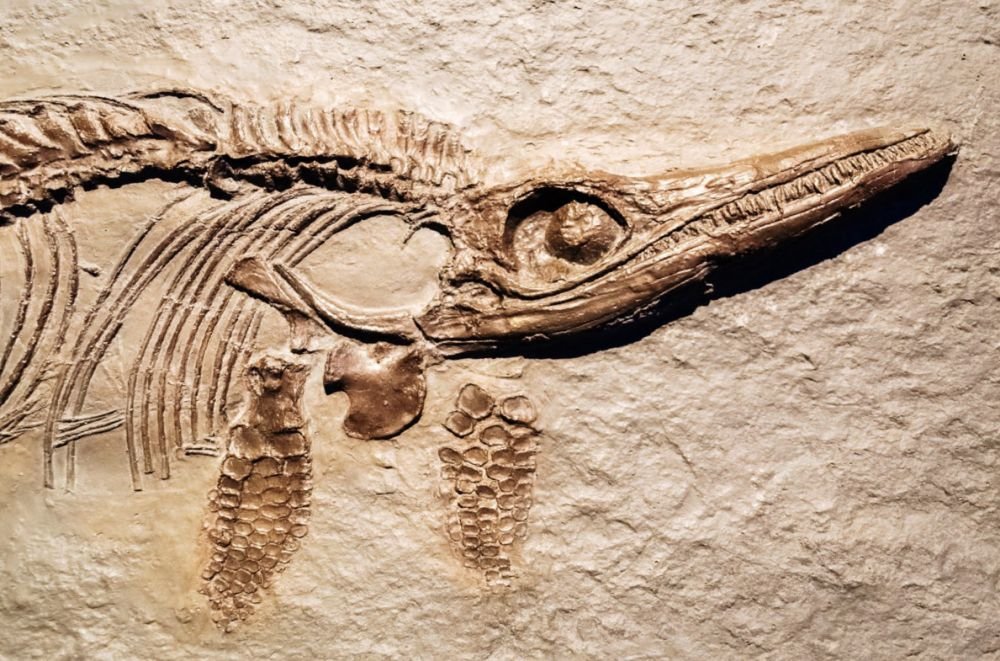
Only a rapid burial could preserve fossils with such fine detail, like this icthyosaurus.
Some squids were fossilized with ink still in their ink sacs. And in a classic example of rapid burial, an ichthyosaur (marine reptile) about 6 feet (2 meters) long was fossilized at the moment of giving birth. One minute this huge creature had just delivered her baby, then seconds later, without time to escape, mother and baby were entombed in a catastrophic avalanche of lime mud.
Only the catastrophic global flood could rapidly bury so many large creatures in layers that are so extensive.
4. Sediment Spread Across Continents
Fossils aren’t the only ubiquitous evidence that confirms the Genesis account of the global flood. Covering vast areas on every continent are sedimentary rock layers laid down by the catastrophic flood conditions. Many of these sediment layers can be traced all the way across continents and even between continents.
For example, the Cretaceous chalk beds of southern England, well known as spectacular white cliffs along the coast, can be traced west and north across England and appear again in Northern Ireland. In the opposite direction, these same chalk beds can be traced across France, the Netherlands, Germany, Poland, southern Scandinavia, and other parts of Europe to Turkey, then to Israel and Egypt and as far as Kazakhstan. Remarkably, the same chalk beds with the same fossils and the same distinctive strata (layers) above and below them are also found in the Midwest USA, from Nebraska to Texas, and from Alabama and Arkansas to Colorado. They also appear in the Perth Basin of Western Australia.
Likewise, the sedimentary rock layers exposed in the walls of the Grand Canyon are not unique to that region. For almost 60 years, geologists have recognized that these strata belong to three of the six megasequences (very thick, distinctive sequences of sedimentary rock layers) that can be traced across North America. The lowermost horizontal sedimentary layer in Grand Canyon is the Tapeats Sandstone, belonging to the Sauk Megasequence. Along with its equivalents (those layers at the same strata level and comprised of the same materials), the Tapeats Sandstone covers much of the USA and parts of Canada and Greenland. But they can also be traced across north Africa and beyond to Israel, Jordan, and Saudi Arabia.
Only the ocean waters rising to sweep across the continents in the global flood can explain these continental-scale sedimentary layers.
Recap: Evidence in the Fossils
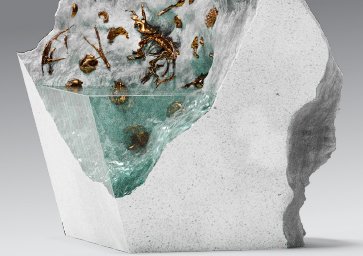
Fossil Graveyard: Fossils are often discovered in pockets where thousands of creatures were buried together. These vast graveyards required thick amounts of rapidly moving, water-transported sand, silt, and mud to bury these creatures all at once.
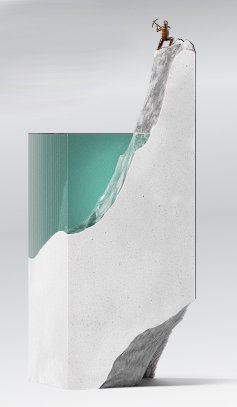
Marine Fossils on Mountains: Sea creatures are found in the oceans today, but their fossils are found on the continents, including high up in today’s mountains. The biblical account of a flood covering all the earth’s land can account for these fossils as well as the mountains.

Exquisitely Preserved Fossils: Only a global, rapid burial explains the exquisite preservation of plants and animals. Slow burial over long periods of time would result in poorly preserved specimens.
5. Features of the Sedimentary Layers
It is hard to imagine what forces were necessary to deposit such a vast, continent-wide series of layers. But some of the features in the layers give us a good indication of that force. For example, there are huge boulders at the bottom of the Tapeats Sandstone, and the unit consists of beds of sand eroded from the underlying, hard crystalline rocks and deposited by violent storms. This is evidence that massive forces deposited these sediment layers rapidly and violently across the entire USA and beyond across North Africa and the Middle East. Today’s slow-and-gradual processes cannot account for this catastrophic deposition, but the global flood cataclysm can.
The strength of the global flood is also evident in the buff-colored Coconino Sandstone in the walls near the top of the Grand Canyon. On average, it is 315 feet (96 m) thick and covers an area of almost 930,000 square miles (2.4 million km2) extending from Mexico to Canada. The volume of sand in this layer is about 55,000 cubic miles (230,000 km3). The Coconino Sandstone also contains physical features called cross-beds. Within the overall horizontal sandstone layer these cross-beds are clearly visible as sloped beds. A possible explanation is that they are remnants of the sand waves produced by the water currents that deposited the sand (like sand dunes but underwater). It can be demonstrated that water, flowing at 3–5 miles per hour (4.8–8 km/h), deposited the Coconino Sandstone as massive sheets of sand, with sand waves up to 60 feet (18 m) high. At this rate, the whole Coconino Sandstone layer would have been deposited in just a few days.
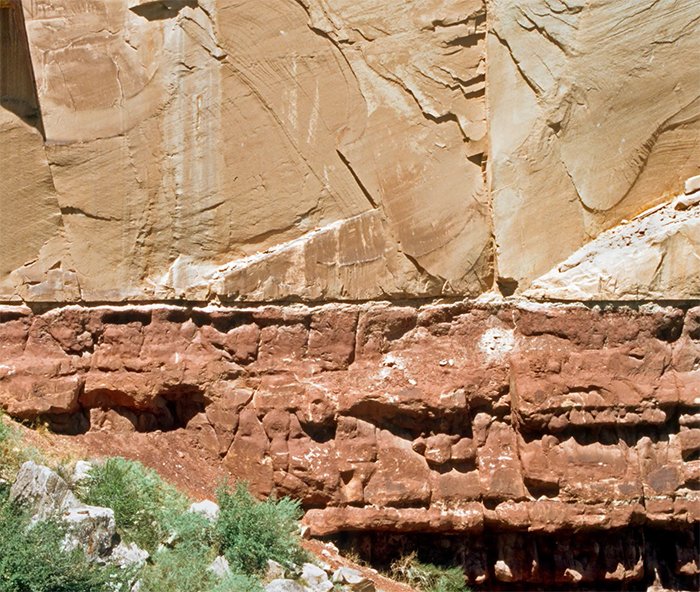
The boundary separating the Coconino Sandstone (top layer of rock) and Hermit Formation (bottom layer) shows no evidence of the millions of years of erosion that evolutionary geologists claim should exist between these layers.
6. No Sign of Millions of Years Between the Layers
If the sedimentary layers took hundreds of millions of years to accumulate at today’s slow rates, then the boundaries between many sedimentary strata should be broken by lots of topographic relief with weathered surfaces from millions of years of wear and erosion after each layer was deposited. However, under the catastrophic conditions of the cataclysmic global flood, even if land surfaces were briefly exposed, any erosion would have been rapid and widespread, generally leaving behind flat and smooth surfaces.
At the boundaries between some sedimentary layers, we find evidence of only rapid erosion. In most other cases, the boundaries are flat and featureless with absolutely no evidence of erosion, which is consistent with no long periods of elapsed time during the global flood cataclysm.
The strata below the Grand Canyon’s Tapeats Sandstone have been rapidly eroded and then extensively scraped flat (planed off). This erosion occurred on a global scale because we see its effects wherever the Tapeats and its equivalents are found across North America, Africa, and the Middle East. This massive erosion affected many different underlying rock layers—granites and metamorphic rocks and tilted sedimentary strata. We know this large-scale erosion was rapid because we find no evidence of weathering below the boundary.
Similarly, the boundary between the Coconino Sandstone and the Hermit Formation is flat, featureless, and knife-edged from one end of the Grand Canyon to the other. No evidence points to erosion of the Hermit Formation before the Coconino Sandstone was deposited. Yet in central and eastern Arizona, almost 2,000 feet (610 m) of sandstone, shale, and limestone (the Schnebly Hill Formation) sit on top of the Hermit Formation, supposedly representing millions of years of deposition before the Coconino Sandstone was deposited on top of them. But there is no evidence of the supposed millions of years of erosion at this boundary in the Grand Canyon area while this deposition was occurring elsewhere.
Recap: Evidence in the Rock Layers
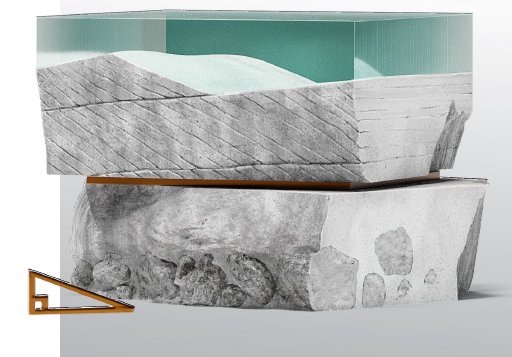
Features Within Sedimentary Layers: Within some rock layers are sloped beds (called cross-beds). These are the remnants of the sand waves produced by strong water currents that deposited the sand. Only rapidly flowing water would be powerful enough to produce the currents to cause these sand waves. Some layers also feature huge boulders that could have been deposited only by huge storms such as in the catastrophic flood.

Layers Across Continents: Around the globe, multiple sediment layers span not just local areas but across multiple continents.
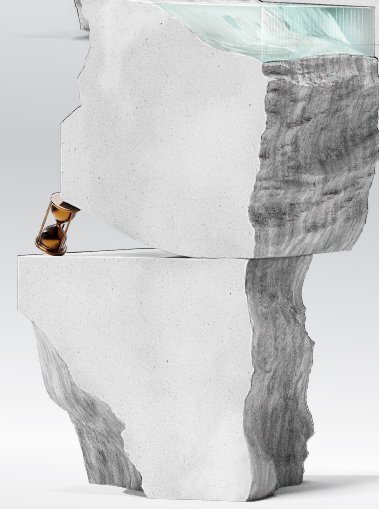
No Time Gap Between Layers: Between most rock layers are no signs of weathering or erosion as would be expected if millions of years elapsed between slow accumulation of such layers. Instead, we see smooth surfaces pointing to the layers being deposited rapidly one after another in the global flood.
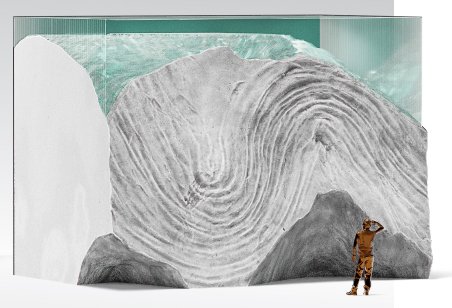
Folded Rock Layers: Rock breaks when bent, but rock layers are sometimes found folded in unbroken curves. Such folding could not happen millions of years after the layers hardened to rock, but only in one catastrophic event when the sediment layers were still wet, soft, and pliable before hardening into the rock we see today.
7. Evidence in the Folds
Further evidence that these layers were laid down quickly, not over millions of years, are the folds we find in these sediment layers. When hard rock is bent (or folded), it invariably fractures and breaks because it is brittle. Only unhardened rock can bend when it is soft and pliable—“plastic,” like modeling clay. When water deposits sediments in a layer, some water is left behind, trapped between the sediment grains. As other sedimentary layers are laid on top of them, the pressure squeezes the sediment grains closer together and forces out much of the water. As the sediment layer dries out, the chemicals that were in the water between the grains convert into a natural cement. This cement transforms the originally soft and wet sediment layer into hard, brittle rock.
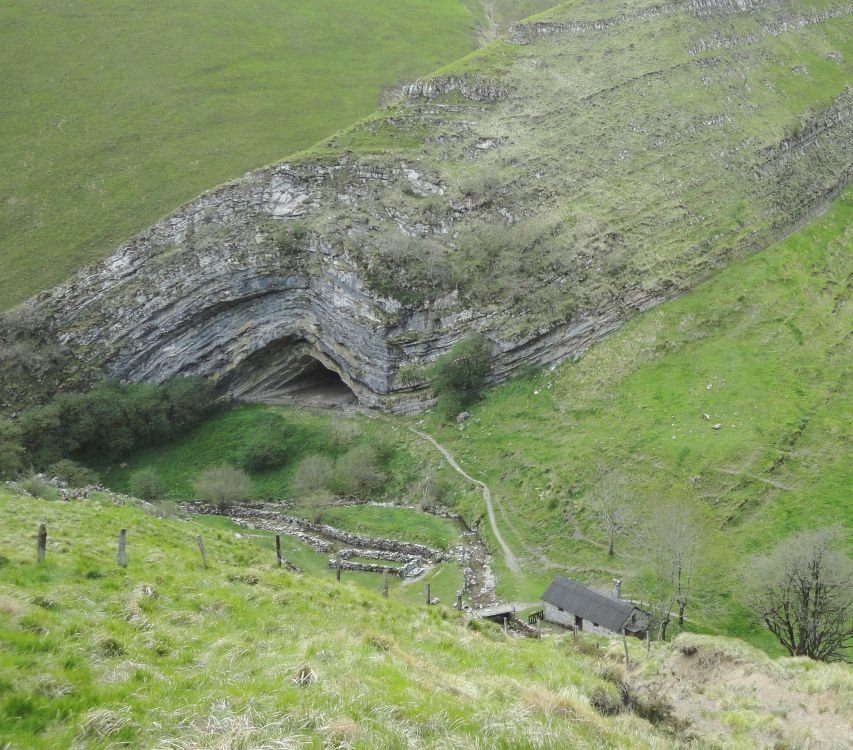
Editor’s Note: This image of Harpea Cave in Southwest France was circulated widely on social media recently and also demonstrates “folded but not fractured” rock. Image by Uranzu via Wikimedia Commons.
This process can occur within hours but generally takes days or months, depending on the prevailing conditions. However, it doesn’t take millions of years, even under today’s slow geologic conditions.
The 4,500-feet (1370-m) of sedimentary layers in the Grand Canyon’s walls stand well above today’s sea level. Earth movements in the past pushed up this sedimentary sequence to form the Kaibab Plateau. However, the eastern portion of the sequence was not pushed up as much and is about 2,500 feet (762 m) lower than the height of the Kaibab Plateau. The boundary between the Kaibab Plateau and the less uplifted eastern canyons is marked by a large step-like fold called the East Kaibab Monocline.
These folded sedimentary layers are visible in several side canyons. For example, the folded Tapeats Sandstone can be seen in Carbon Canyon. These sandstone layers were bent 90° (a right angle), yet the rock was not fractured or broken at the hinge of the fold, as would be expected with ancient brittle rocks. All the layers above the Tapeats Sandstone were similarly folded.

The Tapeats Sandstone in Grand Canyon provides this clear example of unbroken folded sediment layers.
Evolutionary geologists maintain that these layers were deposited over hundreds of millions of years, and then the Kaibab Plateau was uplifted about 60 million years ago, causing the folding. But how could these sedimentary layers still be soft and pliable, as though they had just been deposited?
The conventional explanation is that under the pressure and heat of burial, the hardened layers were bent so slowly that they behaved as though they were plastic and thus did not break. However, pressure and heat would have caused detectable changes in the textures and minerals in these rocks. But we don’t observe such signs in these rocks.
The only logical conclusion is that this whole sequence of strata was laid down in rapid succession within a few months, early in the monthslong global flood cataclysm, followed by the uplift of the Kaibab Plateau at the end of the flood only months later when the sediments were still soft and pliable.
A Gracious Defense
As in Jesus’ day, people demand evidence (Matthew 12:38; John 20:24–25). With these powerful evidences of the global flood, you can give a gracious, reasoned defense that confirms the Bible’s accuracy (1 Peter 3:15). But also pray that the Holy Spirit will open minds to these truths and open hearts to respond to the gospel. The salvation of their souls must be the final objective of our witness.
There can be no doubt that the global flood cataclysm really happened, just as God’s eyewitness account in Genesis describes. The power of God our Creator should humble us with awe and make us tremble at his judgment of humanity’s sin. But just as he offered Noah and his family a way of escape when they built the ark, he offers us salvation in Jesus Christ to escape the coming judgment of fire (2 Peter 3:7). Are you ready?
Answers Magazine
July–September 2021
Recommended Resources

Answers in Genesis is an apologetics ministry, dedicated to helping Christians defend their faith and proclaim the good news of Jesus Christ.
- Customer Service 800.778.3390
- © 2024 Answers in Genesis



